Race Sled to Trail Sled
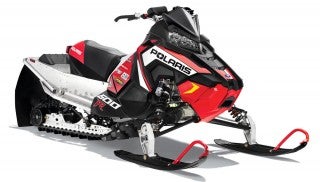
Today’s recently introduced race sleds hint at future performance trail sleds
As we listened to the gathered racers and engineers introducing the latest Polaris race sled, we paid great attention to the details of this latest version. And while this newest race model wasn’t “all” new, it spiked our curiosity when the design engineers explained what was – and why.
The 2017 Polaris 600R continues evolving a chassis and platform that has enjoyed a great deal of success in snocross, ice ovals and long distance terrain racing. The fundamental principle of “if it ain’t broke don’t fix it” applies. But you can evolve it and create a more racer-friendly aspect to its ergonomics in hopes of gaining fractions of seconds on the track. That’s what Polaris has done and that’s what members of Polaris’ race team pointed out.
The new sled takes the Polaris AXYS design to a higher level of onboard riding performance. With more than a passing resemblance to 2017 AXYS chassis production models, the 2017 600R race sled sucks in its gut by 10 inches for a leaner profile. Lean is an operative word as racers can flick from side to side, slide further forward and offer better weight balance thanks to the cinched in styling. All of this helps side-to-side mobility and with a new tighter turning steering, this race version should be much nimbler in the dirtiest corner ruts of a snocross track.
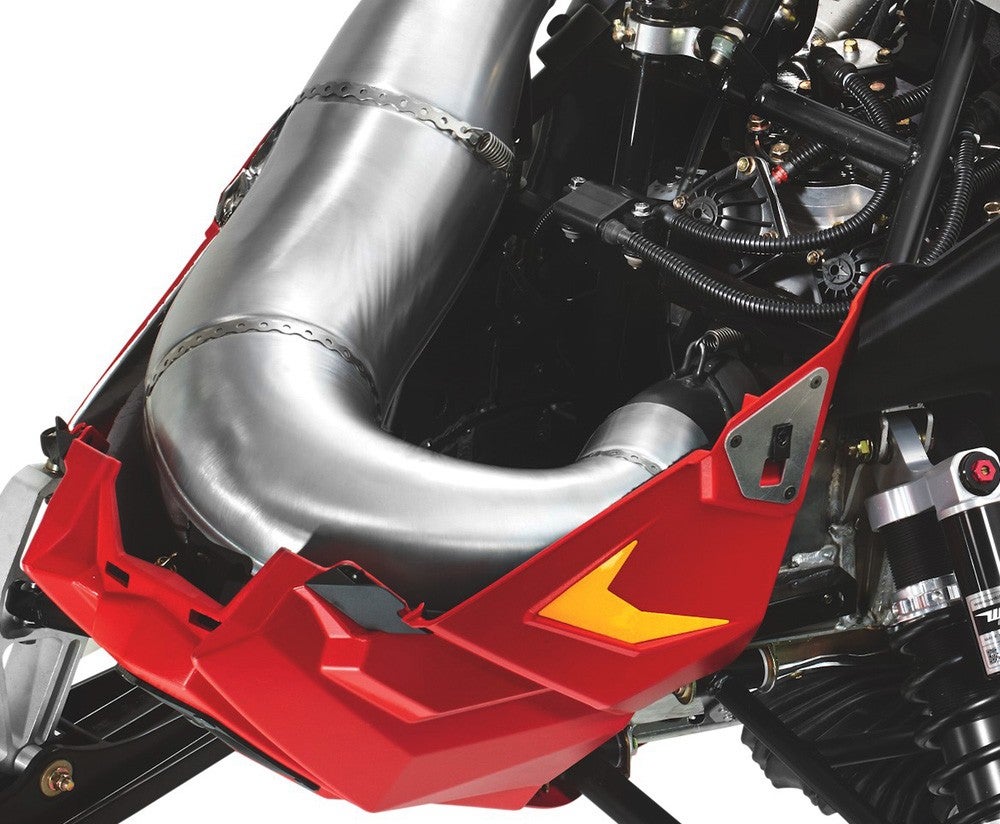
To get the narrow profile they wanted, Polaris engineers made under hood changes on its 600R to fit a revised exhaust pipe and new intake with redesigned plenum.
But, to get the narrowed profile they wanted, Polaris engineers needed to make some under hood changes. The 600R fits a revised exhaust system and new intake with a redesigned plenum. The headlight and windshield needed to be redone as well. The footrest area was redesigned to reduce drag in corners and there was a need to improve under hood ventilation. And, of course, it better accommodates the new narrow hood and enhances the rider’s ability to lean out or into a corner.
That revised steering comes from a steering post that is 13.5 degrees flatter than on the previous race sled and incorporates an improved steering ratio for going from lock to lock. Polaris expects changes to the steering to improve rider mobility for quicker cornering and overall maneuverability.
Narrowing the hood provided the opportunity to create a new exhaust system that would fit the sled’s revised bodywork and would deliver more performance across the 600R’s proven Cleanfire twin’s powerband. As with any race sled, small changes in one area tend to lead to changes in others. Polaris engineers came up with a new clutch weight design for stronger and quicker holeshot performance. That fed a need for a more durable and performance–oriented drive belt.
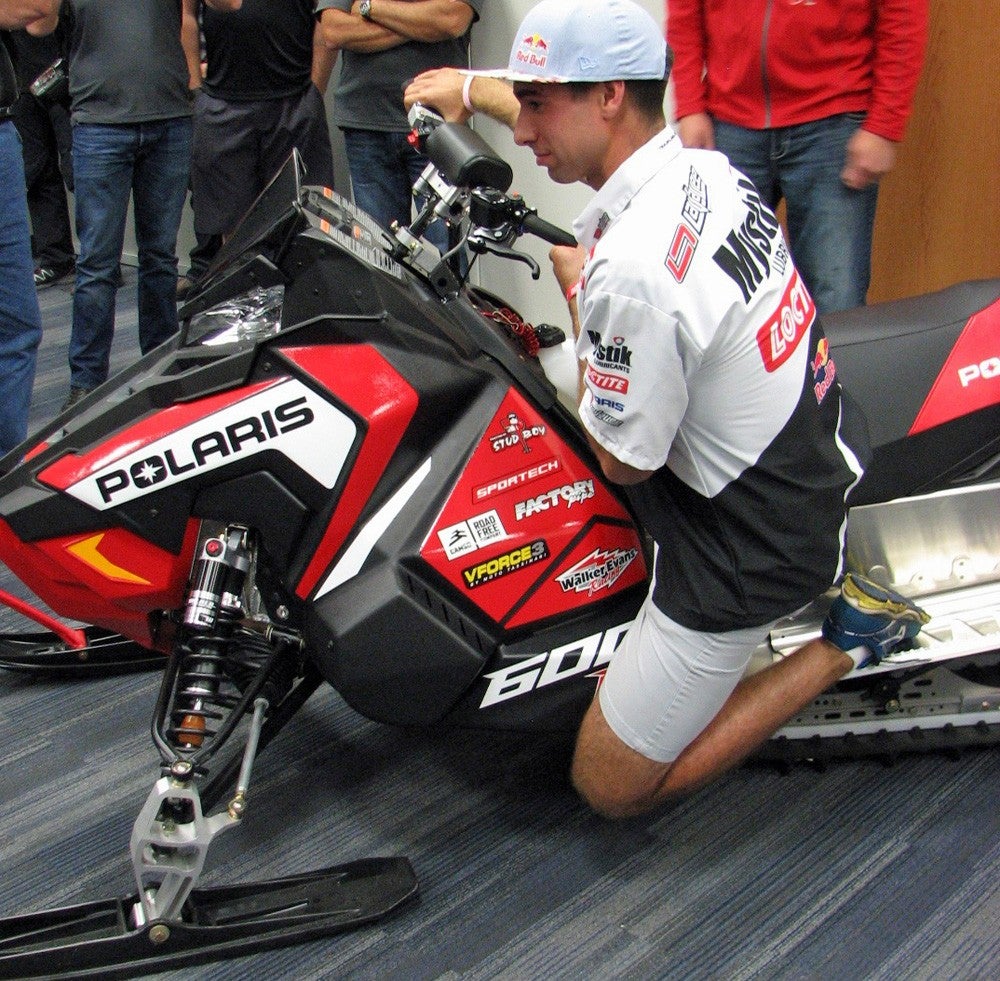
Racers can flick from side to side, slide further forward and offer better weight balance thanks to the 600R’s cinched in styling, which helps rider mobility in the dirtiest corner ruts of a snocross track.
If you’ve had a chance to check out the new-for-2017 Polaris Rush XCR, you’ll find that it borrows from terrain racing experiences. Its designer comes from the race engineer group and has saddled up a few Polaris race sleds in the recent past. Based on that and the fact that racing takes dollars from research and development that need to be put back into production sleds, we expect that features from the 2017 Polaris 600R will make their way to the trail as soon as next season – two seasons at most.
Both Ski-Doo and Arctic Cat joined Polaris in showing off their latest race sleds at the recently concluded Hay Days event in early September. Ski-Doo tends to be more blatant about bringing race sled technology to the trail. The 2017 Ski-Doo MXZ X-RS comes as close as you’ll get to being a race sled. It features the top of the REV food chain performance chassis, the REV-XS RS. It has a forward positioned steering post to accommodate a big bump stand up riding position and it uses top of the line shocks for its premium rMotion and RAS suspensions.
With styling cues and performance packaging borrowed from the racing sleds, this high performance Ski-Doo makes a nice transition from race-bred to trail reliable. Next season we expect to see the high performance trail racer moved to the latest Gen 4 chassis with its cinched in hood and more movement-friendly footrest. Styling will most likely strongly hint of this season’s Ski-Doo racer.
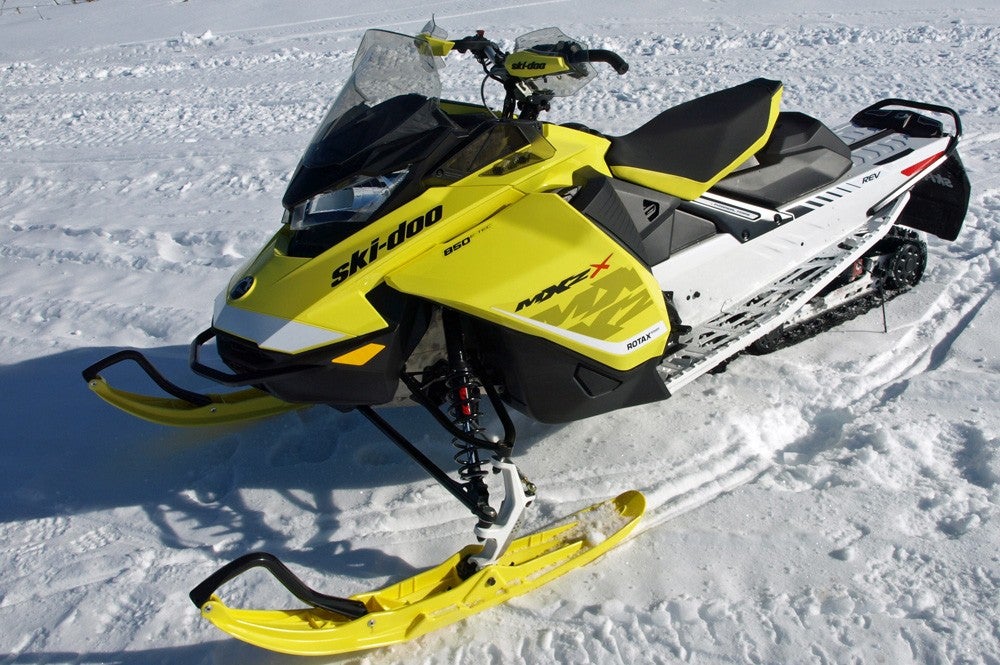
We expect future Ski-Doo high performance race-bred high performance trail sleds will feature platforms and narrow styling based on the new Gen 4 platform.
Then, there’s Arctic Cat. Our opinion is that Cat does race replica trail models best of all. If you want a true race “feel” and the harsh ride that comes with banging nasty ditches, the Ski-Doo MXZ X-RS will be your choice. We feel that the Arctic Cat RR models do the best job of blending a race sled’s hard-edged performance with real-world trail needs that suggest a more flexible and more versatile ride and handling.
Interestingly, Arctic Cat claims that its 2017 racer, the ZR 6000R SX, is the first production snowmobile built for snocross competition featuring electronic fuel injection. The racing Cat uses a Cat-engineered and built 600 C-TEC engine. With factory modifications and additional assistance from aftermarket performance shop Speedwerx, this is a true modified “production” snocross racing Arctic Cat.
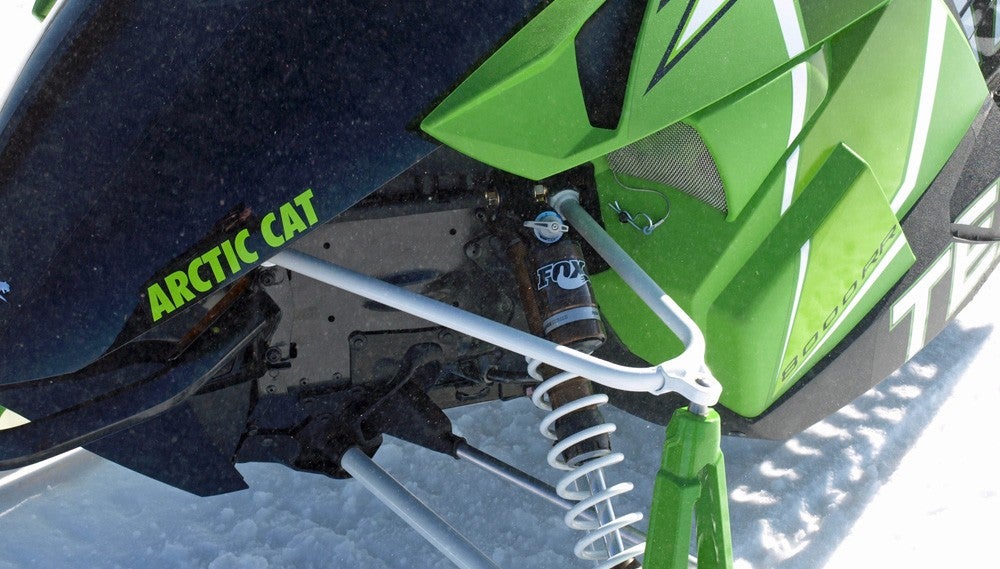
Top of the line race replicas such as Arctic Cat’s 6000 RR feature top of the line shock packages like the Fox three-way quick adjust QS3.
Cat’s terrain racers will get the new 2017 ZR 6000R XC production race sled with all-new Gen-II plastic bodywork and premium FOX 1.5 ZERO QS3-R coil-over ski shocks with Kashima coating. It uses the same C-TEC2 600 DSI engine that saw last season’s Cat terrain racers capture five USXC championships, including Pro 600 and Pro Open.
While we do not expect the 2018 Arctic Cat Race Replica models to be exact replicas of the racing sleds, we do anticipate the trail versions to arrive with premium shocks, a version of the racing bodywork and, perhaps, a limited number of Speedwerx-enhanced power plants.
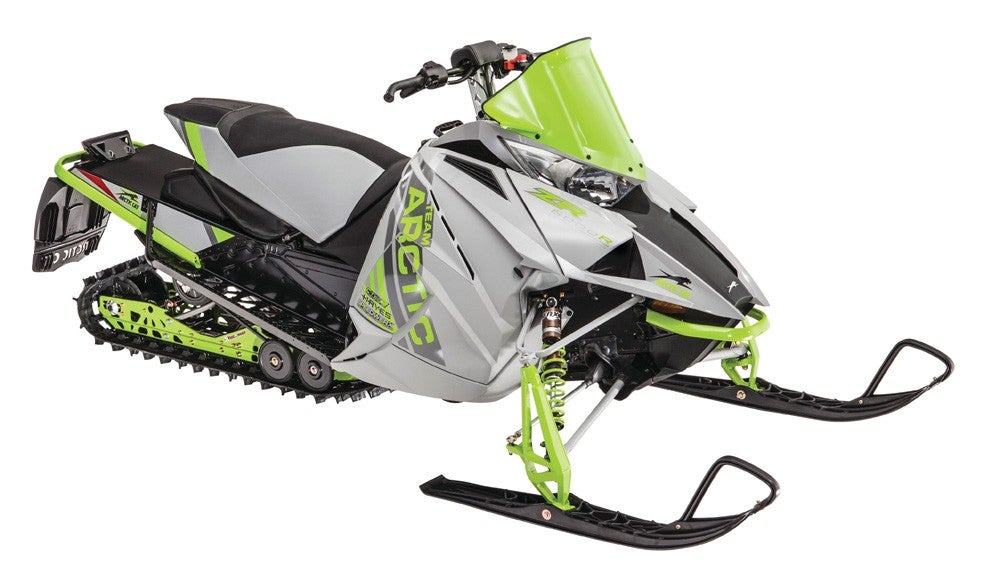
Like the competition, Arctic Cat offers both a snocross and a terrain racing version of its racing-only ZR6000-based race sled.
As we step away from the full effect of the race sled introductions, we note that most of the new racers come with some form of narrower, more racer/rider friendly bodywork that allows the rider to achieve maximum control by leaning in and on the new narrower bodywork. There seems to be a definite attempt to get the rider into a more proactive positon on these high performance trail sleds. Ski-Doo’s new narrow Gen 4 platform and 850cc twin reflect Ski-Doo’s continued effort to get the rider into as far forward of a riding positon as feasible to enhance control. The neatly compact 850cc twin and its new neutral side-to-side placement over the skis reflect that thinking as well. Now here comes Polaris cinching in its AXYS-based race sled by a full 10-inches. Each manufacturer reworked its steering to best accommodate high performance riding, especially for the serious big air and big bang riders.
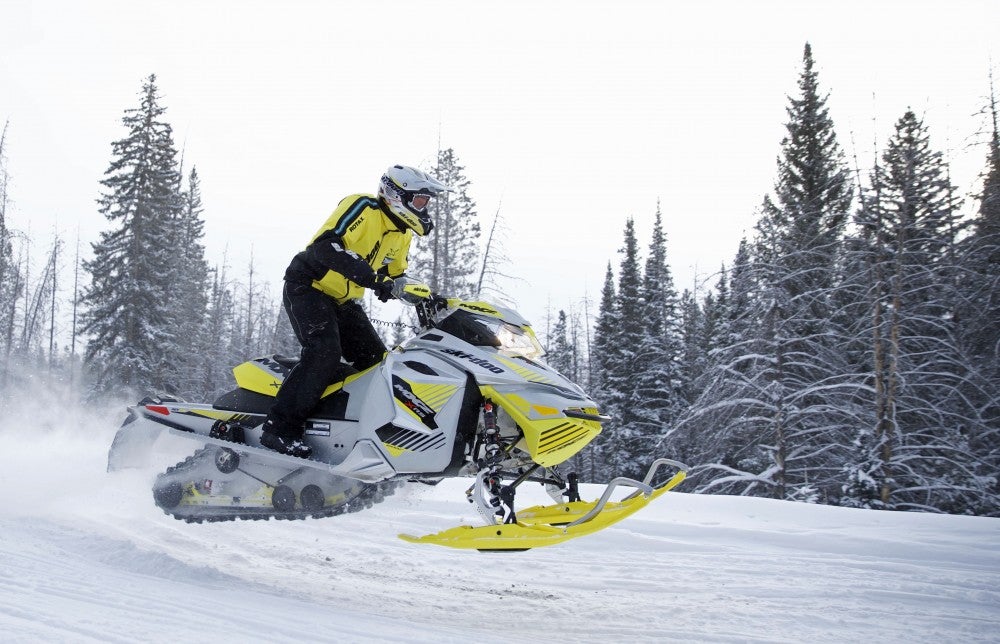
The 2017 Ski-Doo MXZ X-RS comes as close as you’ll get to a race sled. It features the REV-XS RS performance chassis, a forward positioned steering post to accommodate a big bump stand up riding position and it uses top of the line shocks for its premium rMotion and RAS suspensions.
For the past few seasons we couldn’t get too excited about race sled technologies, but we can now. Let’s face it, even we may prefer one set up over another, every top of the line sled rides and handles extremely well. They all have about the same suspension travel and they have very similar power overall. There hasn’t been anything all that great for us to get excited about. Each race-oriented performance trail sled could be ordered early with a wide range of options. But, now we see a new emphasis on design for the trail that allows us to literally embrace our high performance trail sled. The sleds will be narrowed and we’ll have better foot positioning that should allow us to rock the corners harder and quicker. That’ll be fun. And the enhanced steering systems will give us quicker turn-in and better position to ride out deep moguls. We like what we’re seeing for the future and it is coming direct from the race tracks to the trails of the snow world.



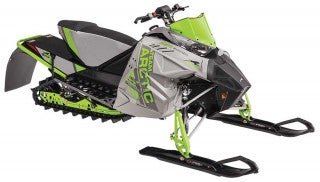
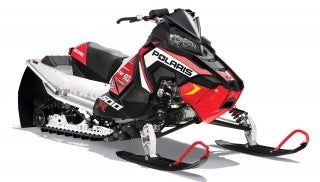
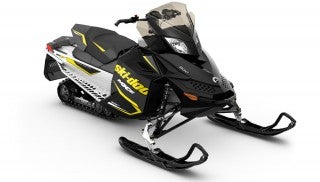


 Your Privacy Choices
Your Privacy Choices